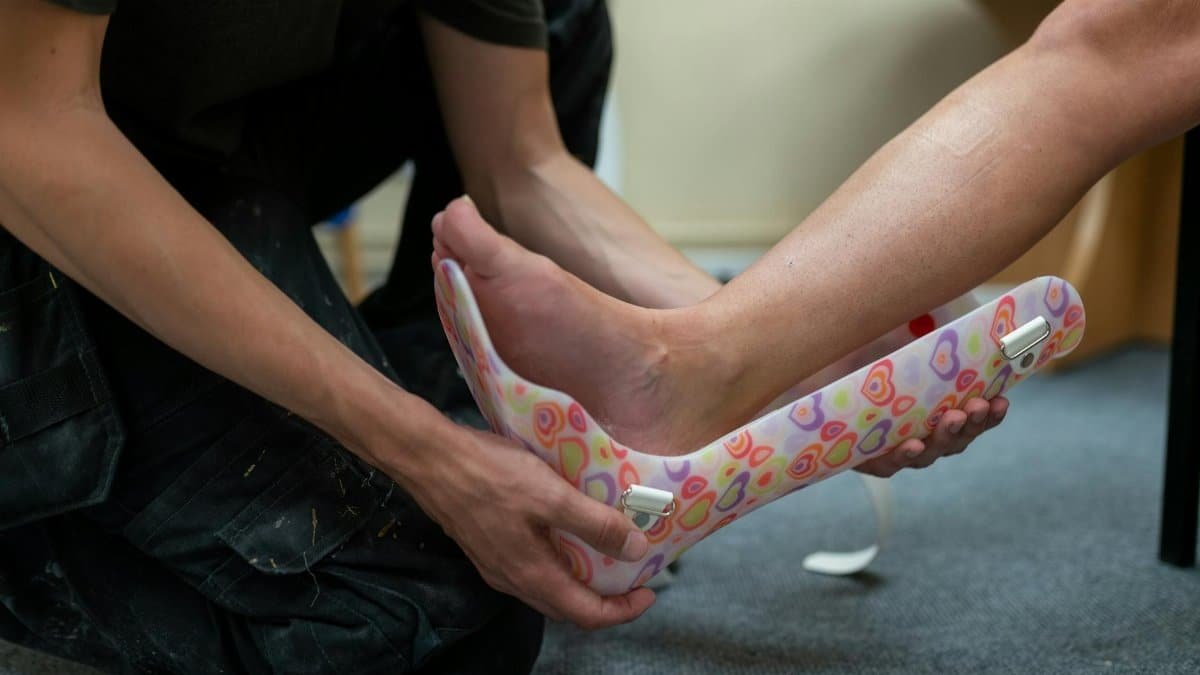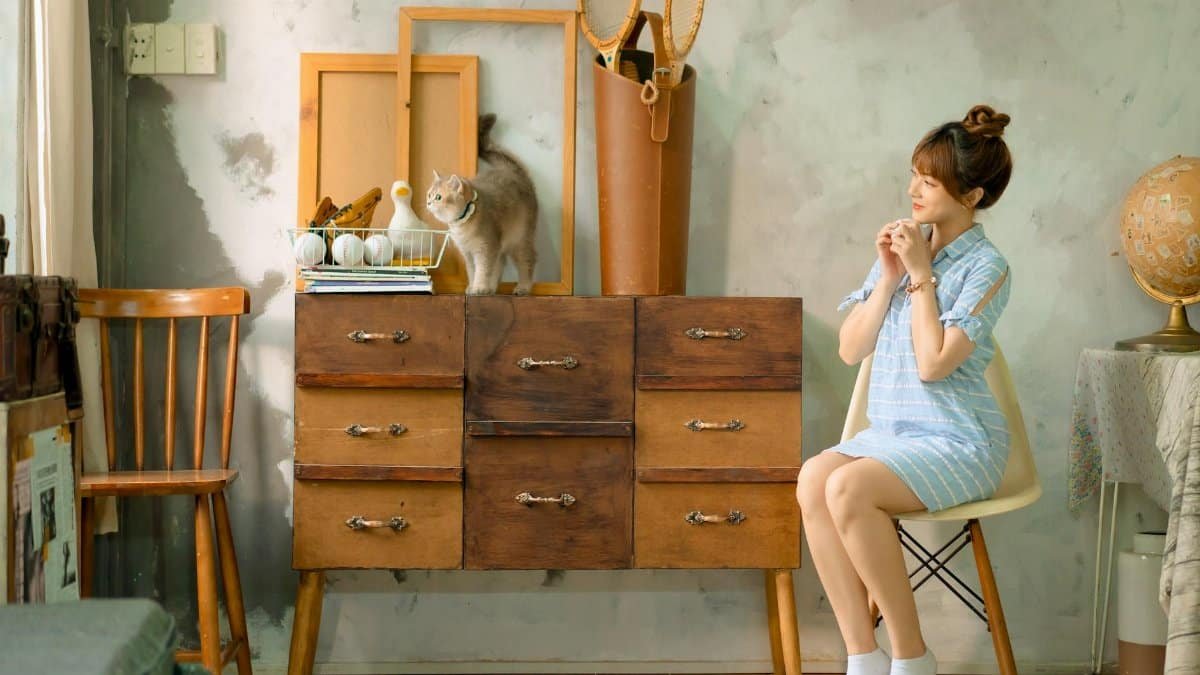As mobility challenges become more common among aging Americans, a quiet revolution is taking place in living rooms and rehab centers across the country. From bustling cities like Chicago to quieter suburbs in Florida, seniors recovering from hip surgery are turning to gentle, seated exercises that blend yoga principles with everyday movements. This approach, often called chair flow hip routines, emphasizes fluidity and safety without the need for standing poses that could strain healing joints. It’s not just about physical recovery; it’s a way to rebuild confidence and maintain independence in a society where one in four adults over 65 reports mobility issues, according to recent data. Physical therapists and yoga instructors are championing these sequences, adapting ancient practices to modern needs, helping thousands navigate the path back to pain-free living.
1. Gentle Seated Warm-Up

Start with something simple to ease into motion. Sit tall in a sturdy chair, feet flat on the floor. Inhale deeply, raising your arms overhead like reaching for the morning sun, then exhale as you fold forward, hands toward your knees. Repeat this five times, syncing breath with movement. This chair flow hip sequence awakens the spine and gently mobilizes the hips without pressure. Imagine a retiree in Seattle, fresh from surgery, who described it as “waking up my body without the fear of falling.” Studies from the National Institutes of Health show such gentle flows can improve flexibility in older adults recovering from joint procedures.
Transition smoothly by adding neck rolls: Tilt your head side to side, then circle gently. It’s a foundational step that sets the tone for deeper engagement.
2. Hip Circle Flow

Focus on the hips directly here. From your seated position, place hands on thighs. Shift weight to one side, circling the hips clockwise for five rotations, then counterclockwise. Breathe steadily, feeling the subtle release in the joint. This targets scar tissue and builds range without strain.
One anonymous account shared online captured the relief: feeling like “unsticking a rusty hinge” after weeks of stiffness. Experts at the Mayo Clinic note that circular movements like these enhance circulation, crucial for post-surgical healing in seniors.
End with a pause, noticing any warmth building in the area—a sign of progress.
3. Seated Warrior Extension

Channel inner strength with this adapted warrior pose. Extend one leg forward as much as comfortable, toes pointing up, while raising the opposite arm overhead. Hold for three breaths, then switch sides. It strengthens the core and opens the hip flexors gently.
Picture a group session in a New York community center, where participants swap stories of regained mobility. The flow mimics standing yoga but stays safe in the chair, reducing fall risks. Research from CDC’s STEADI program highlights how such adaptations prevent injuries in the elderly.
4. Breath-Synchronized Twists

Incorporate twists to detoxify and mobilize. Inhale to lengthen the spine, exhale to twist gently to one side, hand on the chair’s back. Alternate sides for eight breaths. This chair flow hip element eases tension in the lower back, often a companion issue to hip recovery.
It’s not always straightforward; some find the twist reveals hidden tightness, prompting a reflective moment on patience during healing. Therapists recommend it for its role in improving posture, backed by findings in the American College of Sports Medicine.
Build on it by adding a slight forward bend at the end of each twist.
5. Ankle and Knee Mobilization

Zero in on the lower body. Lift one foot slightly, rotate the ankle in circles, then flex and point the toes. Follow with knee lifts, drawing the knee toward the chest without forcing. Do five reps per leg.
This sequence feels like a conversation between joints, promoting blood flow. A Florida senior might recall how it transformed daily tasks, from walking the dog to climbing stairs. It’s grounded in evidence from orthopedic studies emphasizing gradual movement for recovery.
6. Arm and Shoulder Integration

Don’t neglect the upper body. Circle arms forward and back, then interlace fingers and stretch overhead. Combine with hip shifts for a full-body flow. It connects the dots between upper and lower mobility.
In bustling rehab groups, laughter often erupts as arms flail gently— a reminder that recovery can be lighthearted. This holistic approach aligns with trends in senior wellness, where integration prevents compensatory injuries.
7. Seated Cat-Cow Variation

Adapt the classic cat-cow. Arch your back on inhale, rounding on exhale, all while seated. Add hip tilts for extra engagement. Repeat ten times, focusing on breath.
It’s a rhythmic dance that soothes the spine and hips. One participant likened it to “oiling the machine,” capturing the essence of maintenance post-surgery. Such flows are praised for reducing pain, per NIH-backed research.
8. Leg Extension Flow

Extend one leg straight out, hold briefly, then lower slowly. Alternate legs, adding a hip opener by crossing the ankle over the opposite thigh if ready. This builds strength without weight-bearing.
Challenges arise when fatigue sets in, but persistence pays off. Therapists observe marked improvements in gait after consistent practice, supported by clinical trials on seated exercises.
9. Balance and Core Focus

Sit at the edge of the chair, engage your core, and lift both knees slightly. Hold for breaths, then release. It subtly challenges balance while protecting the hips.
Amid the quiet determination of a home routine, this sequence fosters stability. It’s particularly relevant for those in rural areas with limited access to gyms, drawing on accessible yoga adaptations.
10. Relaxation with Hip Openers

Wind down with wide-legged seating: Slide feet apart, lean forward gently. Breathe into the stretch, allowing hips to release. This chair flow hip closer promotes relaxation and recovery.
Reflections often surface here, on how far one’s come since surgery. Online forums echo this sentiment, with shares of newfound ease in sitting for longer periods.
11. Full Body Integration Sequence

Combine elements: Start with arm raises, add twists, then leg extensions. Flow through seamlessly for a comprehensive routine. It’s the culmination, tying isolated moves into harmony.
Groups in California senior centers thrive on this, building community through shared flows. Evidence from wellness studies underscores the mental health benefits alongside physical gains.
12. Cooling Down Meditation

End mindfully. Close eyes, place hands on hips, and breathe deeply for five minutes. Visualize healing energy flowing to the area. This final chair flow hip sequence seals the practice, encouraging rest and reflection.
It’s a gentle farewell, often leaving practitioners with a sense of accomplishment. As trends evolve in 2025, these routines stand out for their accessibility, helping seniors reclaim movement on their terms.
